
Best Practices for PHP Request Validation and Input Filtering
Introduction:
When developing any web application, ensuring the security of data is crucial of. As a widely used server-side scripting language, PHP provides many powerful tools to validate and filter user input. This article will introduce some best practices to help you implement request validation and input filtering security in PHP.
- Using filter functions
PHP provides a set of built-in filter functions that can easily verify and filter user input data. The most commonly used filter functions are filter_var() and filter_input(). Here is a simple example that demonstrates how to use the filter function to validate and filter the user's email input:
$email = filter_input(INPUT_POST, 'email', FILTER_SANITIZE_EMAIL);
if (filter_var($email, FILTER_VALIDATE_EMAIL)) {
// 邮件地址有效,继续处理
} else {
// 邮件地址无效,显示错误消息给用户
}In the above example, the filter_input() function is used to get the submitted POST request Input data named 'email'. The FILTER_SANITIZE_EMAIL filter function is used to remove illegal characters in email addresses. The filter_var() function is used to verify whether the filtered email address is valid.
- Regular Expression Validation
Regular expressions are a powerful tool that can be used for more complex input validation and filtering. PHP's preg_match() function can be used to perform regular expression matching on user input. Here is an example that demonstrates how to use regular expressions to validate the user's phone number input:
$phone = $_POST['phone'];
$pattern = "/^(+d{1,3}-)?d{10}$/";
if (preg_match($pattern, $phone)) {
// 电话号码有效,继续处理
} else {
// 电话号码无效,显示错误消息给用户
}In the above example, the regular expression pattern is used to verify that the phone number entered by the user conforms to the specified format. If the match is successful, the phone number is valid.
- Prevent Cross-Site Scripting Attacks (XSS)
Cross-site Scripting Attacks (XSS) are a common type of web attack in which attackers exploit improper input validation and filtering to insert malicious scripts code. To prevent XSS attacks, user input can be encoded using PHP's htmlspecialchars() function. Here is an example that demonstrates how to use the htmlspecialchars() function to encode user-submitted comments:
$comment = $_POST['comment']; $encoded_comment = htmlspecialchars($comment); // 将编码后的评论存储在数据库中
In the above example, the htmlspecialchars() function will escape HTML tags and special characters to Ensure user input is not interpreted as HTML code.
- Preventing SQL Injection Attacks
SQL injection attacks are another common type of web attack where attackers exploit improper input validation and filtering to execute malicious SQL statements. To prevent SQL injection attacks, you can use PHP's prepared statements or parameterized queries. Here is an example that demonstrates how to use prepared statements to execute a SQL query:
$stmt = $pdo->prepare("SELECT * FROM users WHERE username = :username");
$stmt->bindParam(":username", $username);
$username = $_POST['username'];
$stmt->execute();In the above example, the input is ensured by binding the user-entered variables with predefined parameters. Be properly escaped and filtered, thus preventing SQL injection attacks.
Conclusion:
By following the above best practices, you can implement request validation and input filtering security in PHP. Using filter functions, regular expression validation, and preventing XSS and SQL injection attacks are important steps to ensure the security of user input data. Remember that user input validation and filtering are critical components of web application security, and it is crucial to remain vigilant at all times.
The above is the detailed content of Best practices for PHP request validation and input filtering. For more information, please follow other related articles on the PHP Chinese website!
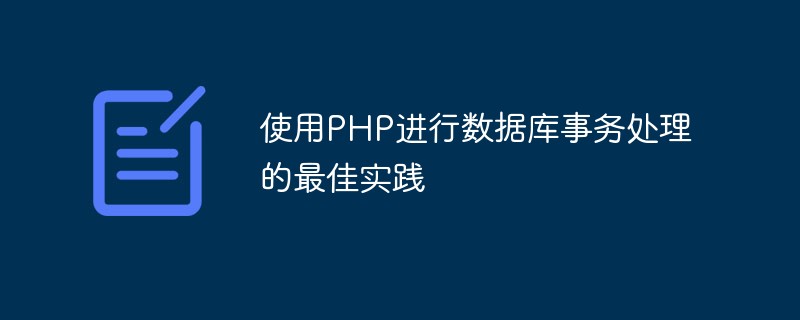 使用PHP进行数据库事务处理的最佳实践Jun 07, 2023 am 08:00 AM
使用PHP进行数据库事务处理的最佳实践Jun 07, 2023 am 08:00 AM在Web开发中,数据库事务处理是一个重要的问题。当程序需要操作多个数据库表格时,保证数据一致性和完整性变得尤为重要。事务处理提供了一种方法来保证这些操作要么全部成功,要么全部失败。PHP作为一门流行的Web开发语言,也提供了事务处理的功能。本文将介绍使用PHP进行数据库事务处理的最佳实践。什么是数据库事务?在数据库中,事务是指一系列操作作为一个整体来执行的过
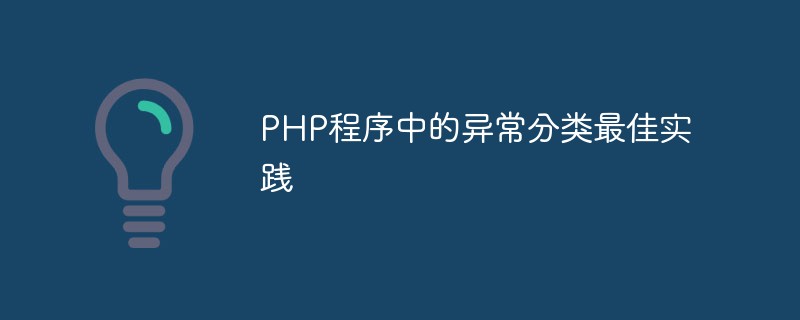 PHP程序中的异常分类最佳实践Jun 06, 2023 am 08:01 AM
PHP程序中的异常分类最佳实践Jun 06, 2023 am 08:01 AM在编写PHP代码时,异常处理是不可或缺的一部分,它可以使代码更加健壮和可维护。但是,异常处理也需要谨慎使用,否则就可能带来更多的问题。在这篇文章中,我将分享一些PHP程序中异常分类的最佳实践,以帮助你更好地利用异常处理来提高代码质量。异常的概念在PHP中,异常是指在程序运行时发生的错误或意外情况。通常情况下,异常会导致程序停止运行并输出异常信息。
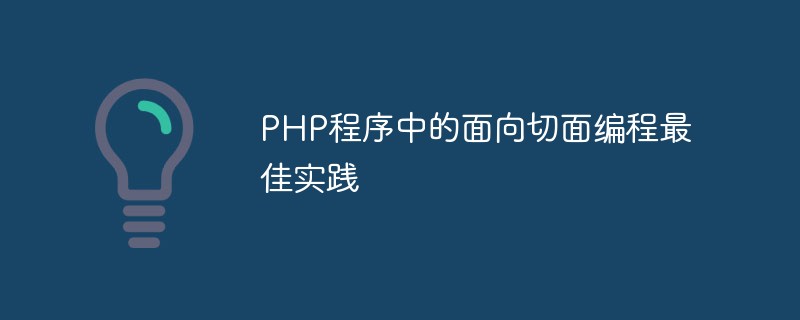 PHP程序中的面向切面编程最佳实践Jun 07, 2023 am 08:01 AM
PHP程序中的面向切面编程最佳实践Jun 07, 2023 am 08:01 AM随着互联网技术的不断发展,PHP语言作为一种开源的脚本编程语言在Web应用程序开发中广受欢迎,而面向切面编程(AOP)则是PHP程序员日常工作中的重要组成部分之一。AOP是一种程序设计方法,它在主业务逻辑代码执行过程中插入针对横切关注点的代码,这些代码可能涉及到日志记录、异常处理、缓存控制等方面。在本文中,我们将介绍PHP程序中的AOP最佳实践。一、AOP的
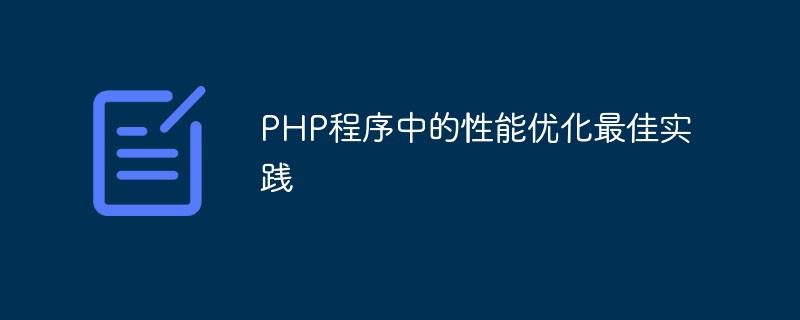 PHP程序中的性能优化最佳实践Jun 06, 2023 am 09:20 AM
PHP程序中的性能优化最佳实践Jun 06, 2023 am 09:20 AMPHP是一种流行的编程语言,被广泛用于网站和Web应用程序的开发。然而,当PHP应用程序变得越来越复杂时,性能问题也会显现出来。因此,性能优化成为了PHP开发中的一个重要方面。在本文中,我们将介绍PHP程序中的优化最佳实践,以帮助你提高应用程序的性能。1.选择正确的PHP版本和扩展首先,确保你是使用最新的PHP版本。新版本通常会改进性能并修复bug,同时也会
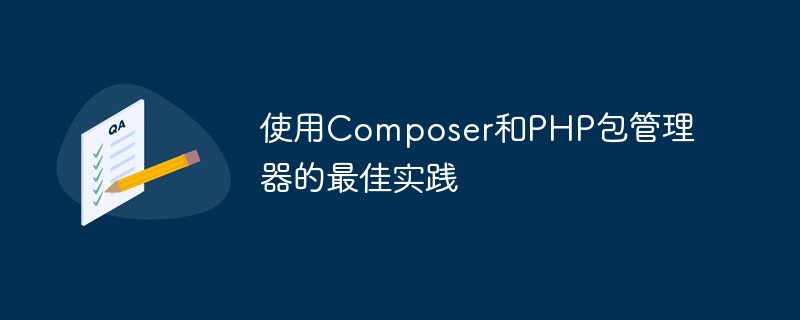 使用Composer和PHP包管理器的最佳实践May 23, 2023 am 08:29 AM
使用Composer和PHP包管理器的最佳实践May 23, 2023 am 08:29 AM随着PHP的日益流行,PHP开发人员面临着许多挑战,其中包括代码管理、可重用性和依赖性管理。这些问题可以使用包管理器来解决,而Composer是PHP最受欢迎的包管理器之一。在本文中,我们将探讨使用Composer和PHP包管理器的最佳实践,从而提高您的PHP开发效率和代码质量。何为Composer?Composer是一款PHP包管理器,它可以轻松管理PHP
 使用PHP进行注解设计的最佳实践Jun 06, 2023 am 10:10 AM
使用PHP进行注解设计的最佳实践Jun 06, 2023 am 10:10 AM随着Web应用程序的不断发展,代码越来越复杂,开发人员需要能够更好地组织和管理代码。注解设计是一种使代码更加可读、可维护和可扩展的有效方法。PHP是一种强大的编程语言,而且支持注解。在这篇文章中,我们将介绍使用PHP进行注解设计的最佳实践。什么是注解?注解是将元数据添加到源代码中的一种方法。它们提供了对类、方法、属性等的额外信息,这些信息可以被其他程序或框架
 使用PHP进行数据持久化的最佳实践Jun 06, 2023 am 08:05 AM
使用PHP进行数据持久化的最佳实践Jun 06, 2023 am 08:05 AMPHP是一种广泛应用于Web开发的编程语言,其强大的数据持久化功能使得PHP成为了许多项目的首选语言之一。在PHP中,数据持久化是一个重要的话题,因为它涉及到存储和检索数据的方法。在本文中,我们将介绍一些使用PHP进行数据持久化的最佳实践。使用数据库管理系统使用数据库管理系统(DBMS)是进行数据持久化的最常见方法之一。PHP中有一些成熟的数据库管理系统可以
 PHP开发中的10个最佳实践May 23, 2023 am 08:11 AM
PHP开发中的10个最佳实践May 23, 2023 am 08:11 AMPHP是一种广泛使用的开源脚本语言,特别适用于Web开发领域。与许多其他编程语言相比,PHP的学习曲线较为平滑,但是为了生产高质量、可维护的代码,遵守最佳实践是非常重要的。下面是PHP开发中的10个最佳实践。使用命名空间在开发PHP应用程序时,避免全局名称冲突是非常重要的。使用命名空间是一个非常好的办法,可以将代码包装在一个逻辑上的包中,从而使之与其他代码分


Hot AI Tools

Undresser.AI Undress
AI-powered app for creating realistic nude photos

AI Clothes Remover
Online AI tool for removing clothes from photos.

Undress AI Tool
Undress images for free

Clothoff.io
AI clothes remover

AI Hentai Generator
Generate AI Hentai for free.

Hot Article

Hot Tools

Dreamweaver CS6
Visual web development tools

ZendStudio 13.5.1 Mac
Powerful PHP integrated development environment

Atom editor mac version download
The most popular open source editor

SublimeText3 Mac version
God-level code editing software (SublimeText3)

Safe Exam Browser
Safe Exam Browser is a secure browser environment for taking online exams securely. This software turns any computer into a secure workstation. It controls access to any utility and prevents students from using unauthorized resources.






